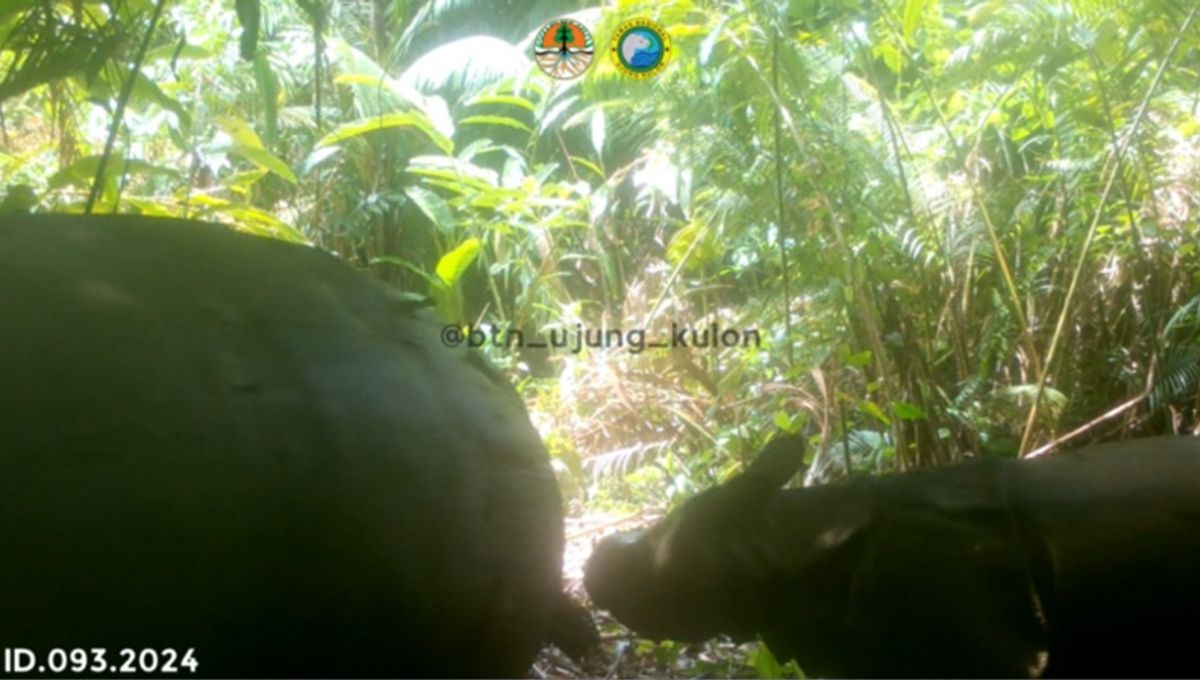
In the jungles of Indonesia, a camera trap has captured footage of a Javan rhinoceros calf, one of the rarest and most threatened large mammals on planet Earth.
Spotted alongside its mother, the Javan rhino calf was spotted in Indonesia’s Ujung Kulon National Park on the morning of March 4, 2024. The calf is estimated to be between 3 to 5 months old, but little else is known about the individual – it’s not even certain whether it is male or female yet.
The video (below) follows previous sightings in 2022 and 2023 that each showed other new Javan rhino calves, suggesting the troubled species is perhaps not as doomed as once thought.
“Ahamdullilah [praise be to God], this is good news and proves that the Javan rhino in the world, which only exists in Ujung Kulon, can develop well and sustainably,” Satyawan Pudyatmoko, Director General of the Natural Resources and Ecosystem Conservation (KSDAE), said in a statement.
While this is promising evidence that the population is reproducing, Pudyatmoko goes on to say that we should not be “lulled by the joy of finding this birth.”
“We and all parties who assist in efforts to preserve the Javan rhino must not be careless and always anticipate any threats that might occur,” he added.
The Javan rhinoceros (Rhinoceros sondaicus) is one of the five remaining rhinoceros species currently on Earth, known for the relatively short and stumpy horns found only on males.
They are listed as critically endangered with extinction by the IUCN Red List. Until the past few centuries, the species could be found throughout Java and Sumatra, as well as the mainland of Southeast Asia, East India, Bhutan, and the south of China.
Throughout the 19th and early 20th centuries the rhinos were prolifically hunted for their horns, which were prized as hunting trophies and used in traditional medicine. Now, under 100 individuals are left, all of which live within Ujung Kulon National Park on the far western tip of Java, Indonesia.
Although heavily protected, the remaining population faces a myriad of problems. Along with continued habitat destruction and the ever-present threat of poaching, the region is vulnerable to tsunamis and eruptions of the nearby Anak Krakatau volcano.
Their extremely limited population means Javan rhinoceros have a very low genetic diversity within the species. There are also significantly fewer females than males, raising further doubt whether the species could support a robust, sustainable population.
While news of fresh life is always a boon, the Javan rhino isn’t out of the woods yet.
Source Link: New Footage Shows One Of World's Rarest Large Animals Is Having Babies